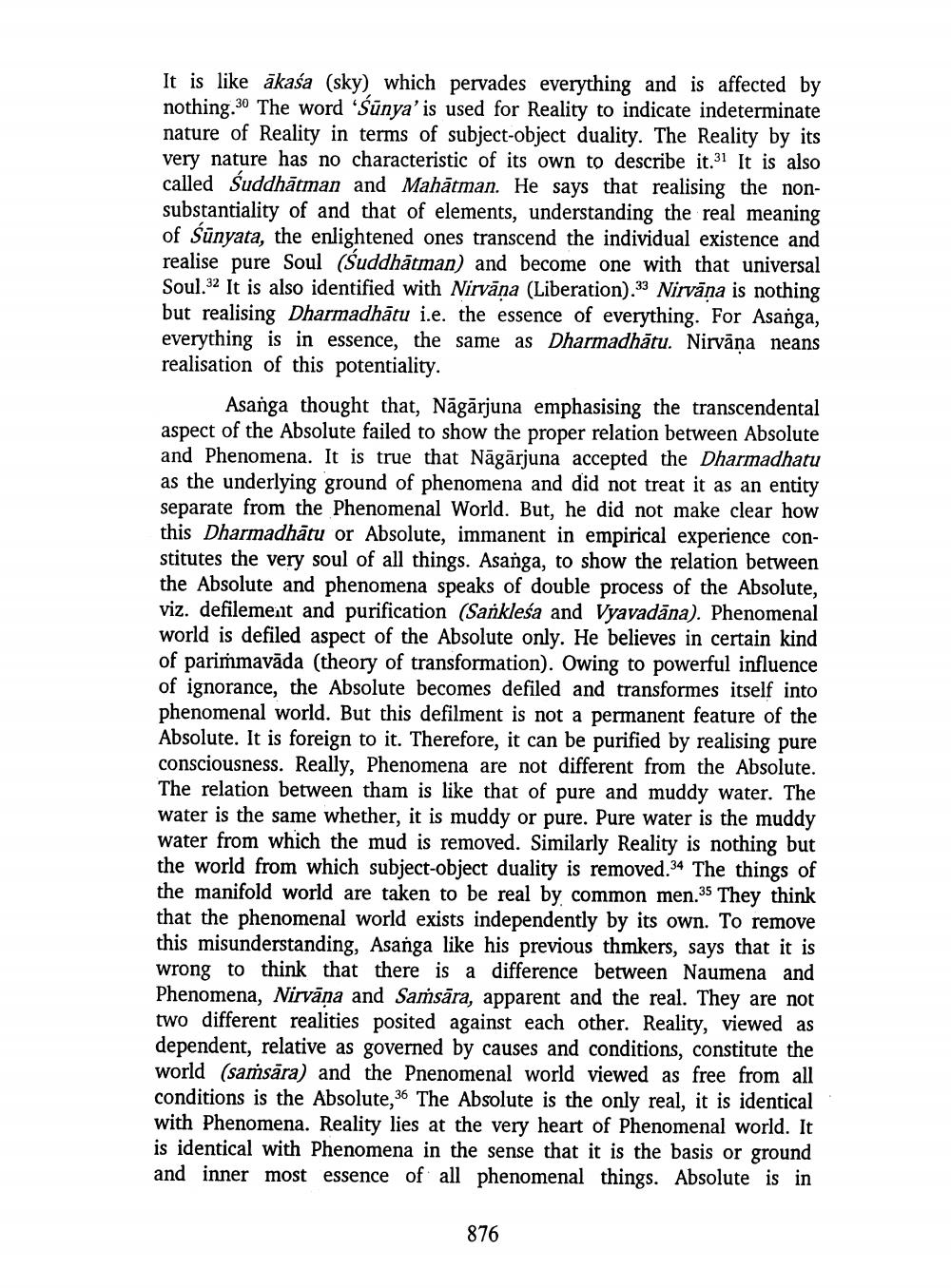________________
It is like akaśa (sky) which pervades everything and is affected by nothing. 30 The word 'Sünya' is used for Reality to indicate indeterminate nature of Reality in terms of subject-object duality. The Reality by its very nature has no characteristic of its own to describe it.31 It is also called Suddhātman and Mahātman. He says that realising the nonsubstantiality of and that of elements, understanding the real meaning of Sünyata, the enlightened ones transcend the individual existence and realise pure Soul (Suddhātman) and become one with that universal Soul.32 It is also identified with Nirvana (Liberation).33 Nirvana is nothing but realising Dharmadhātu i.e. the essence of everything. For Asanga, everything is in essence, the same as Dharmadhātu. Nirvana neans realisation of this potentiality.
Asanga thought that, Nāgārjuna emphasising the transcendental aspect of the Absolute failed to show the proper relation between Absolute and Phenomena. It is true that Nāgārjuna accepted the Dharmadhatu as the underlying ground of phenomena and did not treat it as an entity separate from the Phenomenal World. But, he did not make clear how this Dharmadhātu or Absolute, immanent in empirical experience constitutes the very soul of all things. Asanga, to show the relation between the Absolute and phenomena speaks of double process of the Absolute, viz. defilement and purification (Sańkleśa and Vyavadāna). Phenomenal world is defiled aspect of the Absolute only. He believes in certain kind of parimmavāda (theory of transformation). Owing to powerful influence of ignorance, the Absolute becomes defiled and transformes itself into phenomenal world. But this defilment is not a permanent feature of the Absolute. It is foreign to it. Therefore, it can be purified by realising pure consciousness. Really, Phenomena are not different from the Absolute. The relation between tham is like that of pure and muddy water. The water is the same whether, it is muddy or pure. Pure water is the muddy water from which the mud is removed. Similarly Reality is nothing but the world from which subject-object duality is removed.34 The things of the manifold world are taken to be real by common men.35 They think that the phenomenal world exists independently by its own. To remove this misunderstanding, Asanga like his previous thmkers, says that it is wrong to think that there is a difference between Naumena and Phenomena, Nirvana and Samsāra, apparent and the real. They are not two different realities posited against each other. Reality, viewed as dependent, relative as governed by causes and conditions, constitute the world (saṁsāra) and the Pnenomenal world viewed as free from all conditions is the Absolute, 36 The Absolute is the only real, it is identical with Phenomena. Reality lies at the very heart of Phenomenal world. It is identical with Phenomena in the sense that it is the basis or ground and inner most essence of all phenomenal things. Absolute is in
876




